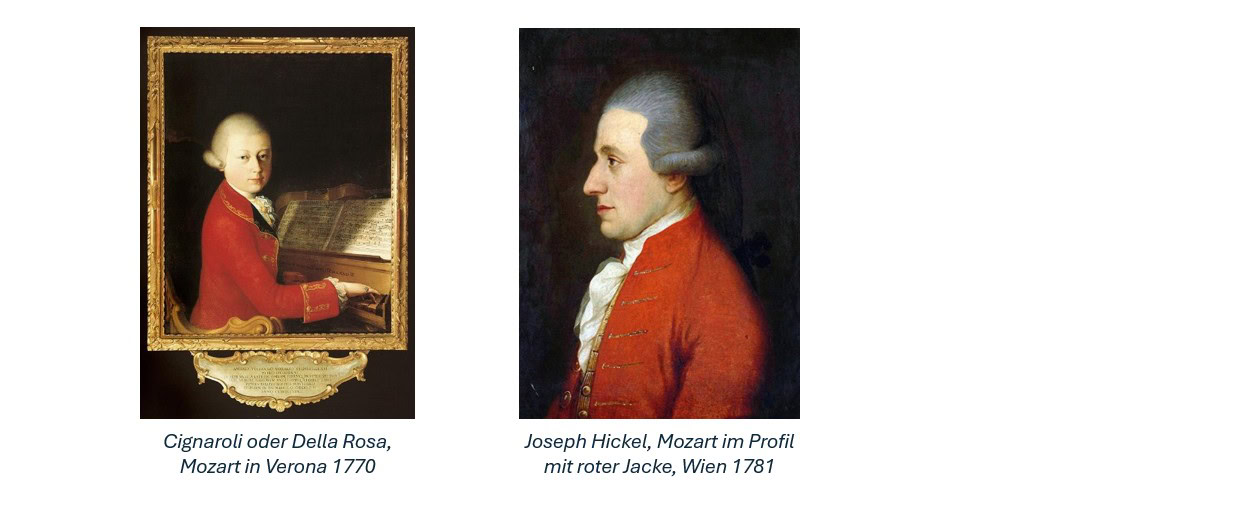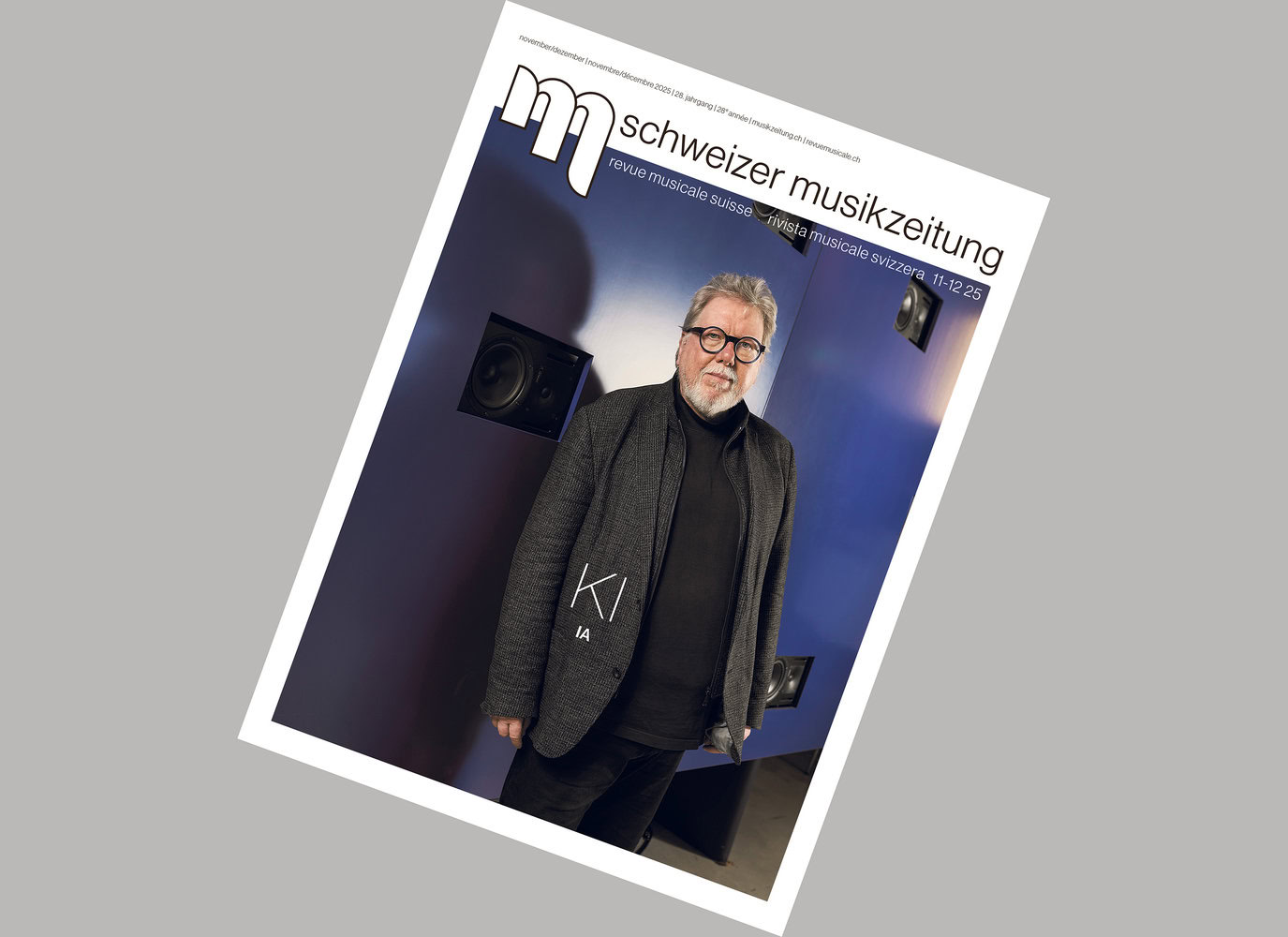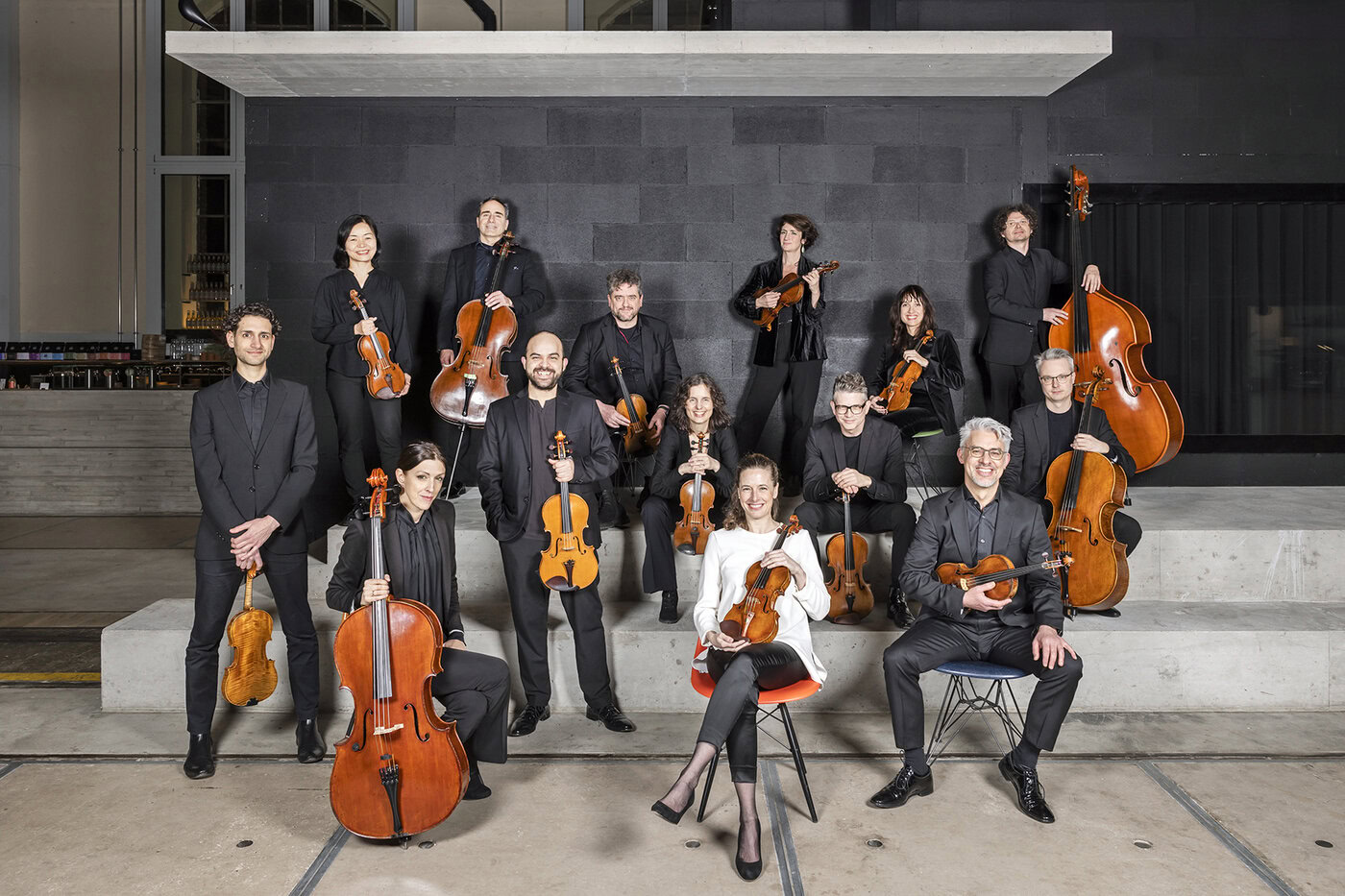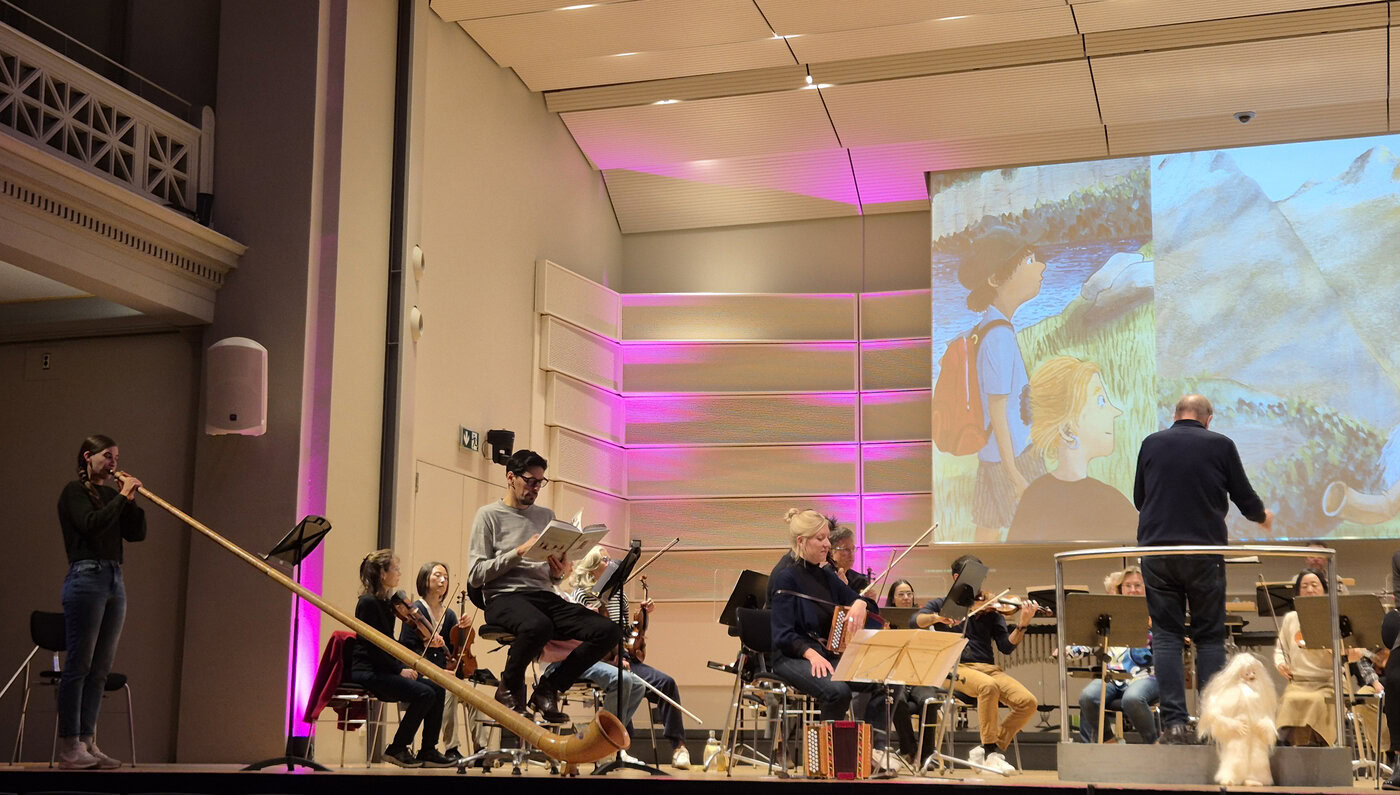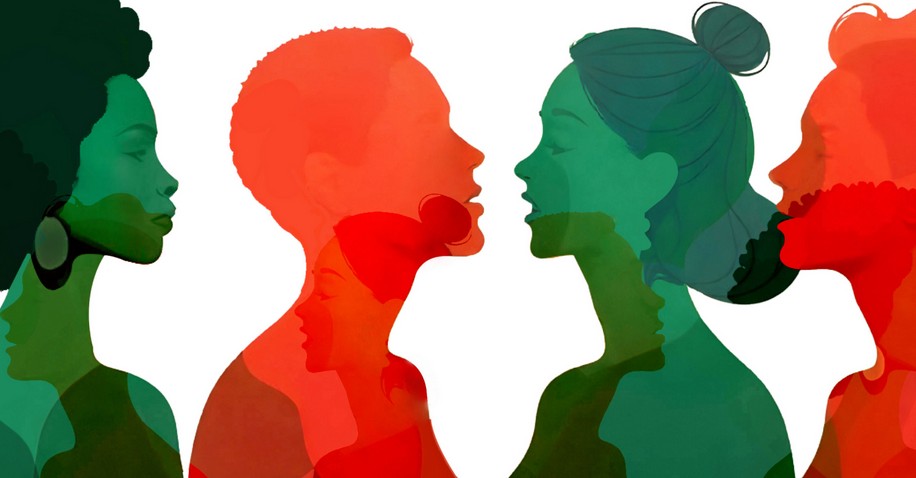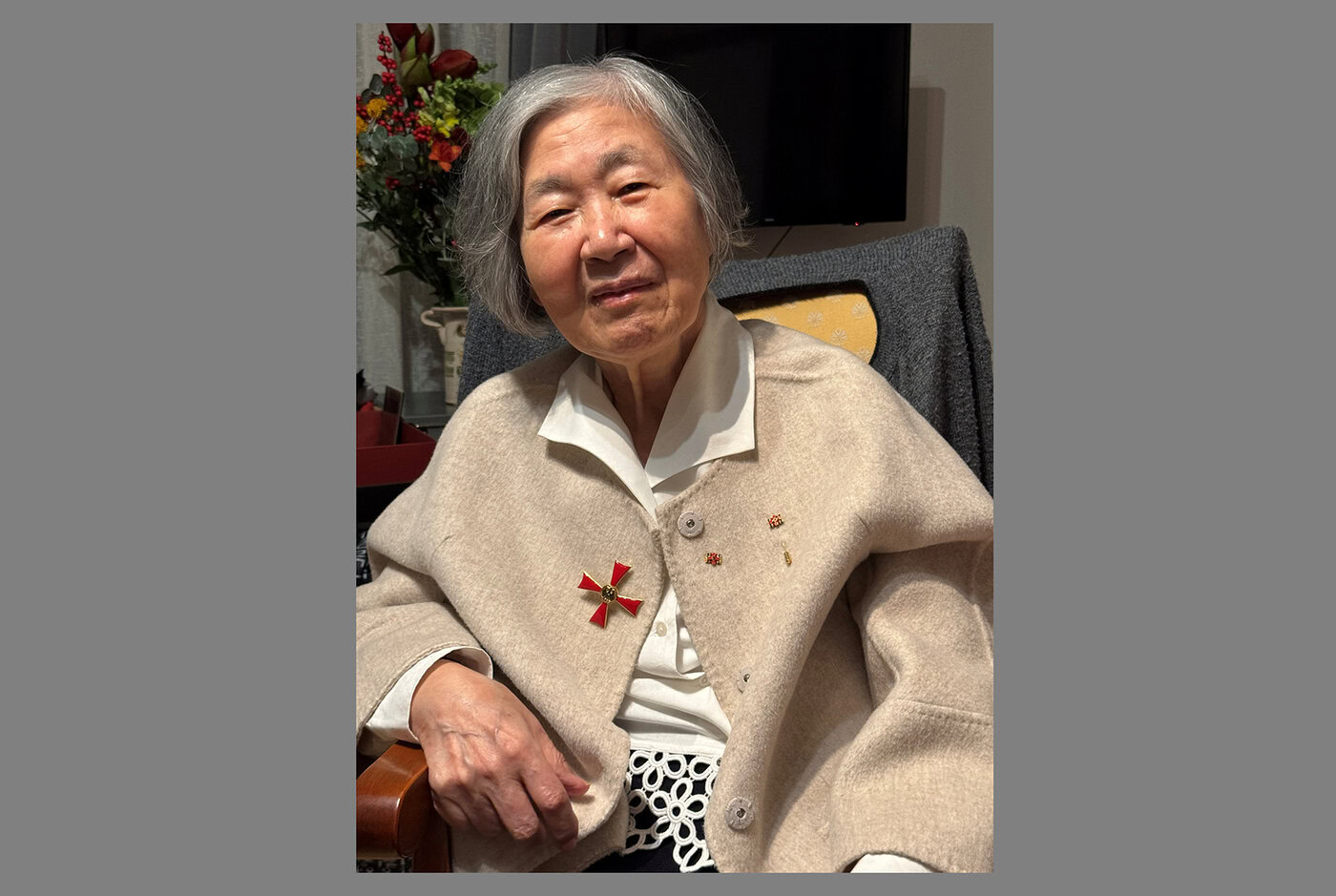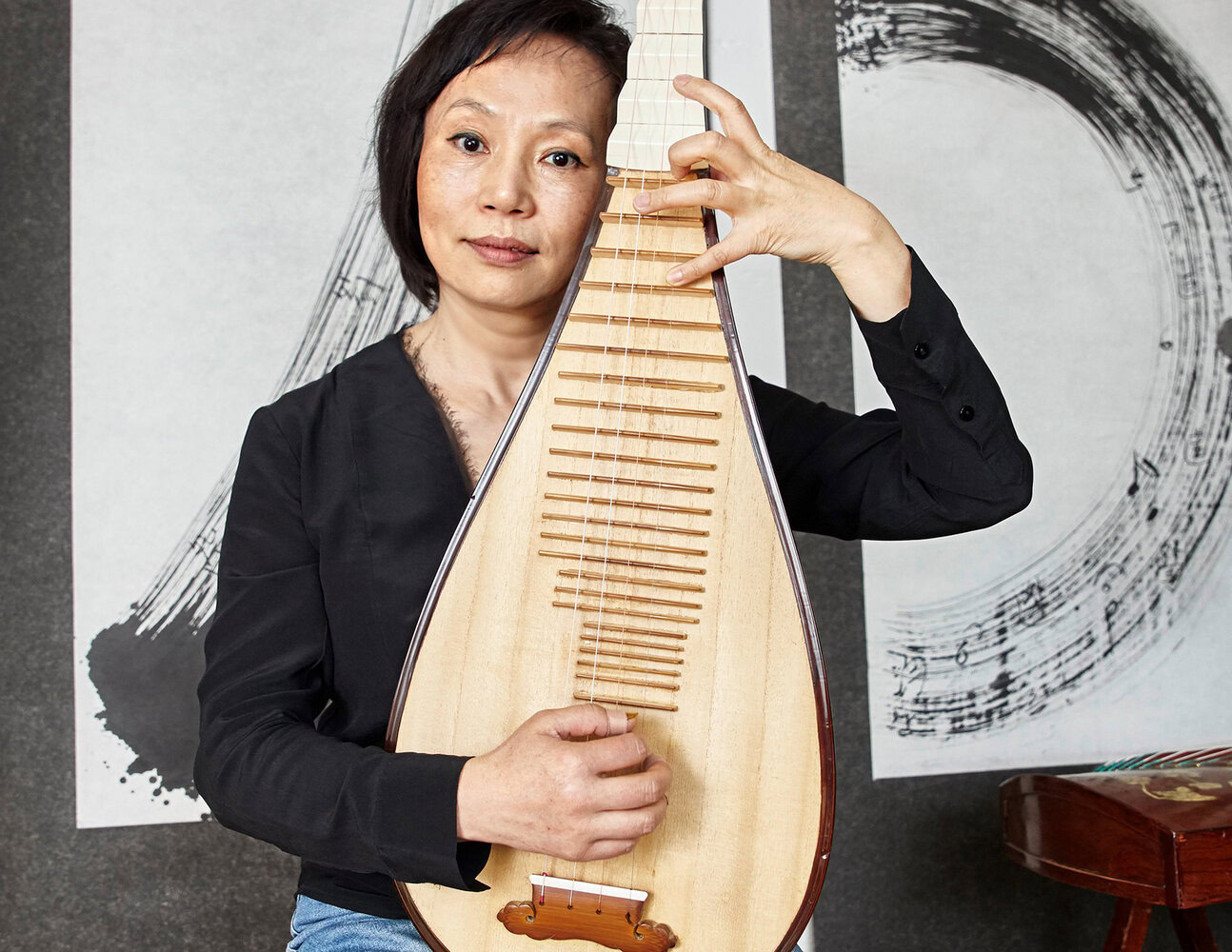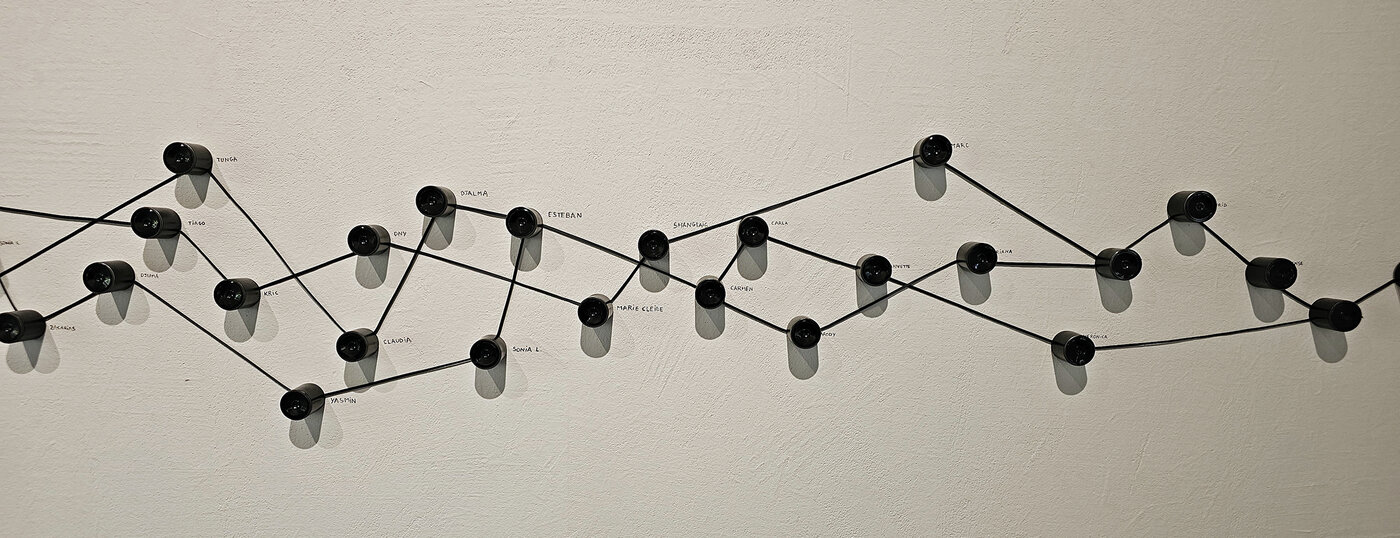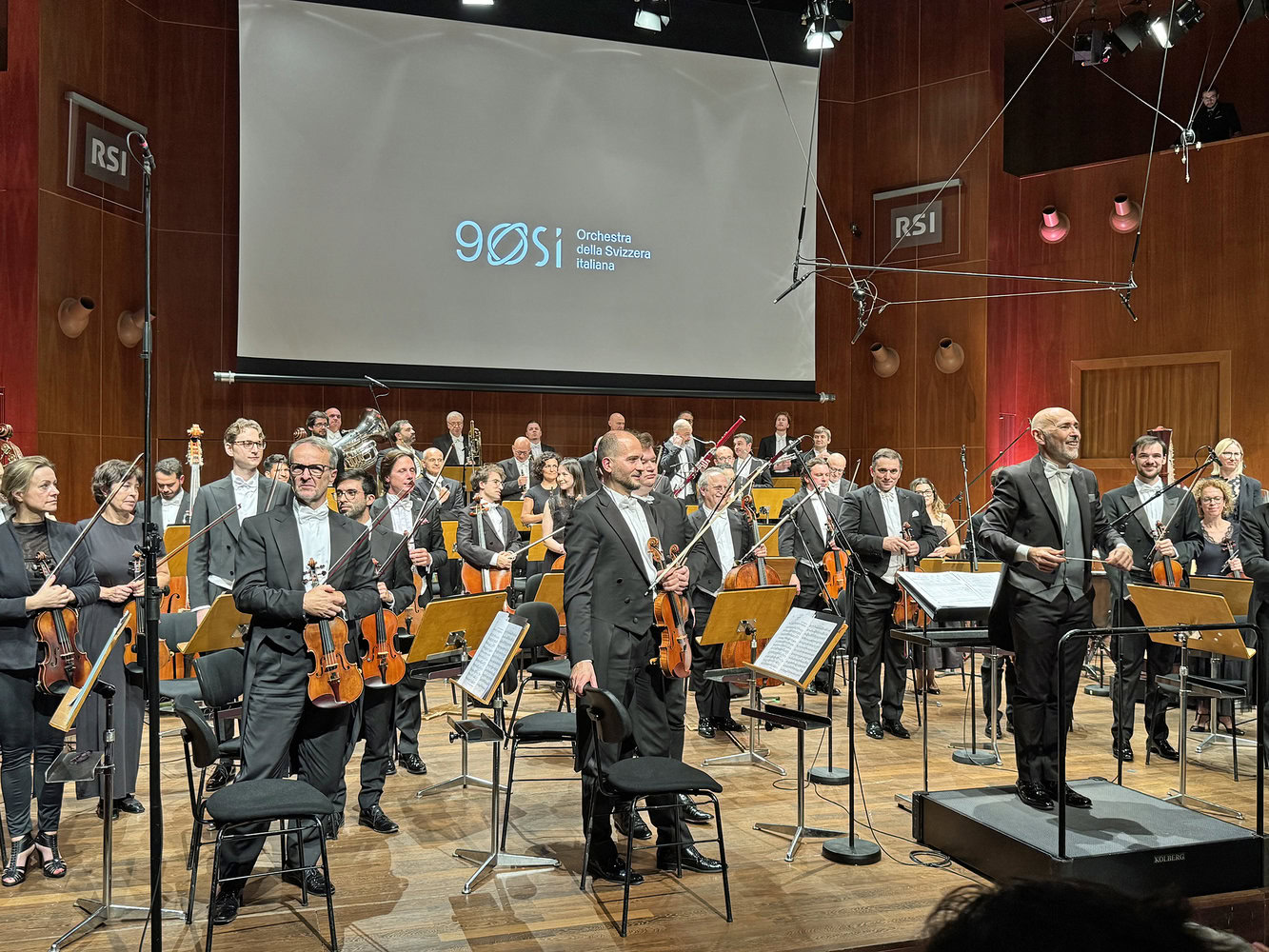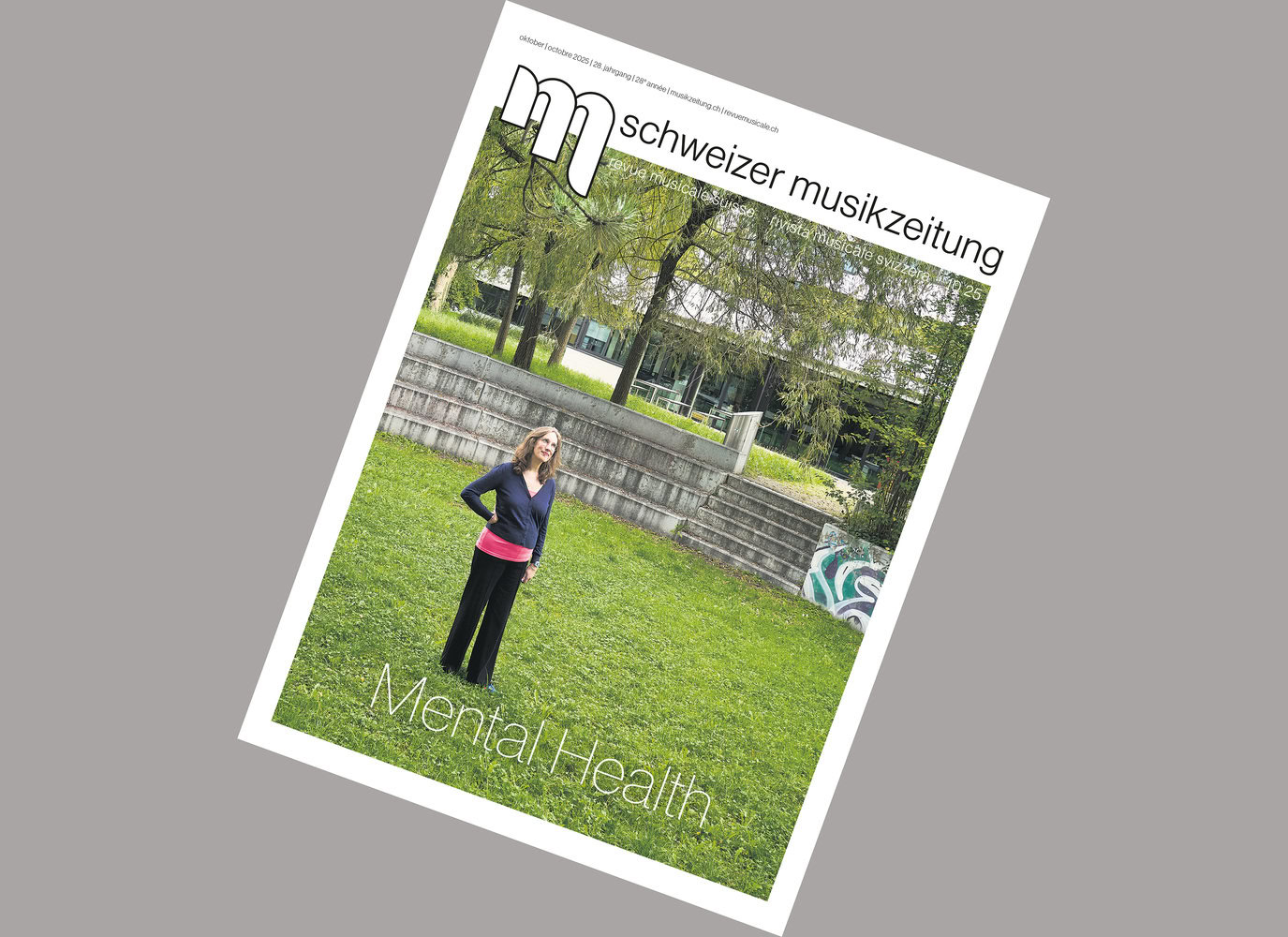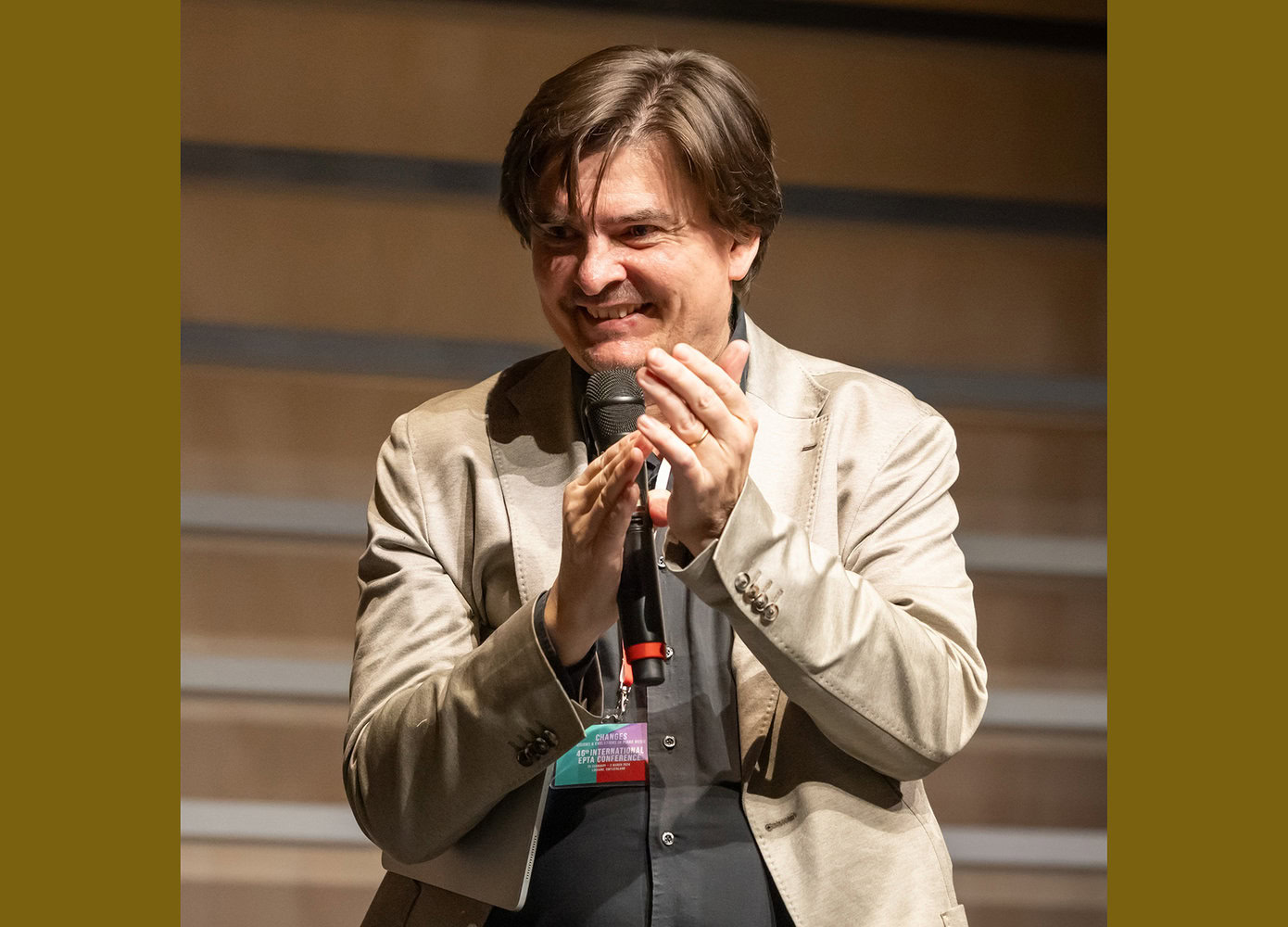Open letter regarding the vote on the «Halving Initiative» in March 2026
130 individuals, particularly from the music industry, have signed an open letter regarding the vote on the «Halving Initiative» in March 2026.
Zurich, December 2025
Dear musicians, cultural professionals, and users of SRG services
Dear Ms. Susanne Wille
In March 2026, we will vote on the halving initiative. We cannot take a stand early enough to defend ourselves against this attack on our public broadcaster. Among other things, the SRG is committed to providing independent information, representing the diversity of cultures in our country, building bridges between science and the public, and publicizing the concerns of minorities. It fulfills its mission in all parts of the country and in all national languages. In fulfilling its mandate, it is indispensable to our country in terms of maintaining democratic conditions and strengthening the sense of community. No commercially oriented private broadcaster driven by particular interests can even begin to fulfill the aforementioned tasks. We are called upon to express our solidarity with the SRG in discussions and at any public appearances in the coming period and to ensure that the aforementioned initiative is rejected.
This obligation is binding, regardless of the fact that the measures decided upon by SRG management in recent months must be protested in the strongest possible terms. The strategy of right-wing populists, which aims to undermine democratic conditions, includes attacks on independent media and the freedom of science and the arts. The cancellation of programs in the fields of literature and science, for example, and most recently in the field of music – «Musik unserer Zeit» (Music of Our Time) – represents a premature concession to the aforementioned right-wing extremist tendencies and a departure from key points set out in the public service remit.
The major cultural associations in Switzerland have so far refrained from making any public statements on these cuts – presumably with the intention of not weakening the campaign against the halving initiative by criticizing the SRG. However, given the current situation and future developments, a firm commitment to continued adequate funding for the SRG and criticism of decisions made at the top are two sides of the same coin. The SRG deserves our support because of its unique selling points. Its current strategy of adapting to market forces means disregarding the mandate that justifies adequate public funding in the first place. Instead of canceling programs such as «Wissenschaftsmagazin» and «Musik unserer Zeit,» the management's strategy in the referendum campaign should be to resolutely continue the dialogue between science and society and to carefully cultivate profound journalistic work in the cultural sector.
Market research may consider the listeners of Espace deux's musical and literary features to be a negligible quantity, as it does the die-hard fans of «Klassik-telefon» or the loyal audience of «Echo der Zeit» – to stick with the example of radio programs. With regard to the upcoming vote, it should not be forgotten that this regular audience is prepared to mobilize in support of the SRG.
The SRG must focus on resistance rather than adaptation, on its uniqueness—if it does not want to dig its own grave. It must urgently remember which core areas of its mandate it needs to protect and who in civil society are its comrades-in-arms, its allies in the fight against the halving initiative.
The signatories in alphabetical order
Heinrich Aerni, Ingrid Alexandre, Dieter Ammann
Ulrike Andersen, Monika Baer, Nik Bärtsch
Werner Bärtschi, André Baltensperger, Philip Bartels
Felix Baumann, Peter Baur, André Bellmont
Elisabeth Berger, Marino Bernasconi, Ramon Bischoff
William Blank, Dominik Blum, Bettina Boller
Hugo Bollschweiler, Thüring Bräm, Esther de Bros
Albin Brun, Catriona Bühler, Christiane Bult
Peggy Chew, Jessie Cox, Flurin Cuonz
Reto Cuonz, Therese Cuonz-Räz, Jürg Dähler
Claudio Danuser, Daniela Dolci, Mariana Doughty
Alfred Felder, Adrian Frey, Daniel Fueter
Thomas Gartmann, Bettina Ginsberg, Roger Girod
Katharina Gohl, Anna-Katharina Graf, Kathrin Graf
Ivo Haag, Jonas C. Haefeli, Viviane Hasler
Edu Haubensak, Doris Hauser, Fritz Hauser
Ruedi Häusermann, Hanna Helfenstein, Horst Hildebrandt
Christian Hilz, Jeannine Hirzel, Beat Hofstetter
Christoph Homberger, Raphael Immoos, Markus Jans
Mischa Kaeser, Eriko Kagawa, Vera Kappeler
Christoph Keller, Max E. Keller, Simone Keller
Burkhard Kinzler, Michael Kleiser, Christian Kobi
Canan Kocaay, Tamriko Kordzaia, Niklaus Kost
Herbert Kramis, Hanspeter Kriesi, Anne-May Krüger
Jojo Kunz, Annette Labusch, Matías Lanz
Leslie Leon, Heinrich Mätzener, Delia Mayer
Thomas Meyer, Roland Moser, Moritz Müllenbach
Marie-Louise Müller Choquard, Martin Neukom, Lucas Niggli
Anne-Catherine de Perrot, Stefka Perifanova, Peter Reidemeister
Felix Renggli, Nicola Romanò, Petra Ronner
Michel Roth, Johannes Rühl, Bettina Ruf
Edward Rushton, Nina Sahdeva, Claudine Saner
Urs Saner, Evangelos Sarafianos, Tobias Schabenberger
Sir András Schiff, Isabelle Schnöller, Oliver Schnyder
Muriel Schwarz, Meinrad Schweizer, Yuuko Shiokawa
Peter Siegwart, Rahel Sohn, Peter R. Solomon
Bruno Spoerri, Eleonor Stähli, Jacques Stähli
Urs Stäuble, Egidius Streiff, Monica Thommy
Germán Toro Pérez, Balz Trümpy, Saadet Türköz
Nina Ulli, Christoph Ullmann, Petra Vahle
Katharina Weber, Urs Weibel, Andreas Werner
Peter Wettstein, Maki Wiederkehr, Helena Winkelmann
René Wohlhauser, Maria Wolff, Alfred Zimmerlin, Samuel Zünd
PDF download of the original letter
_______________________
PS
«If 100,000 people want to listen to James Last and one person wants to listen to Anton Webern, you don't have to broadcast James Last for 100,000 hours and Webern for one hour; instead, you broadcast James Last for one hour and Anton Webern for one hour. Since all 100,000 can listen at the same time, all 100,000 Last fans get their money's worth, and so does the Webern fan. That's democracy.»
Urs Frauchiger (1936–2023)
Cellist and author, he was in charge of the music department at the Bern studio of Swiss German Radio from 1970 to 1977; from 1992 to 1997, he headed the Swiss Arts Council Pro Helvetia.
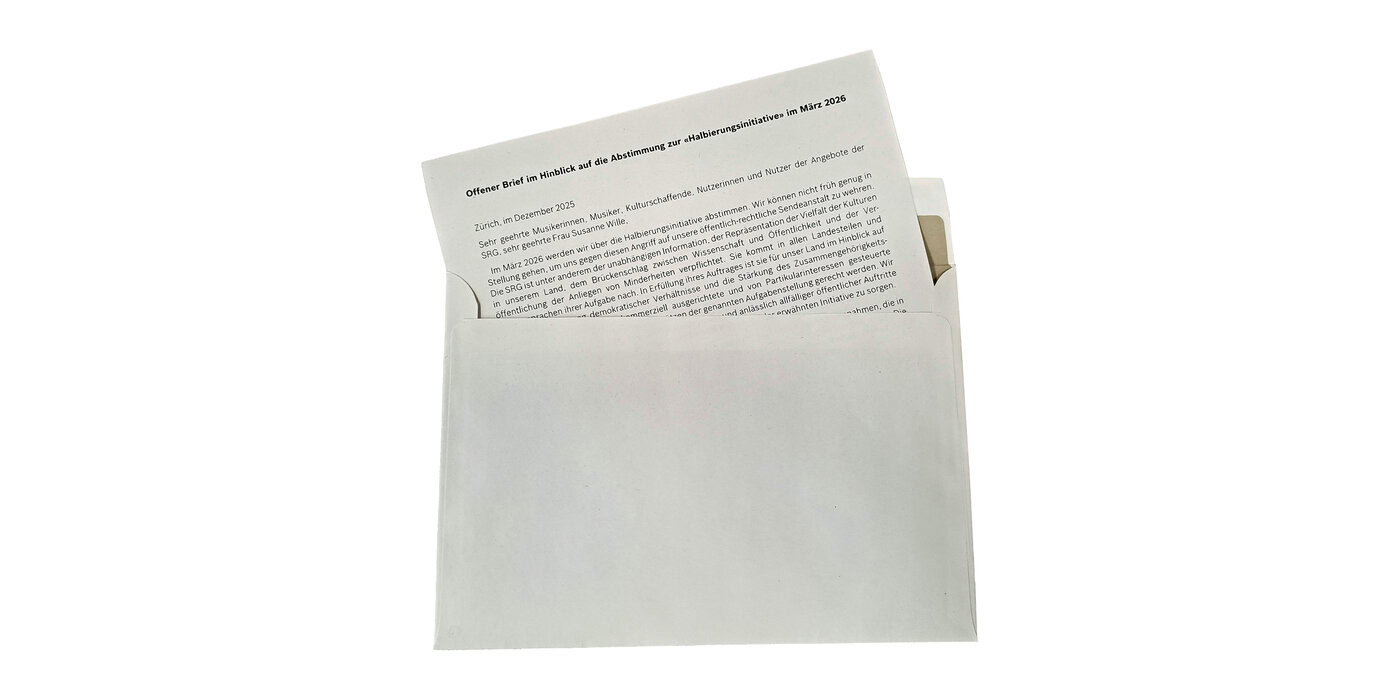






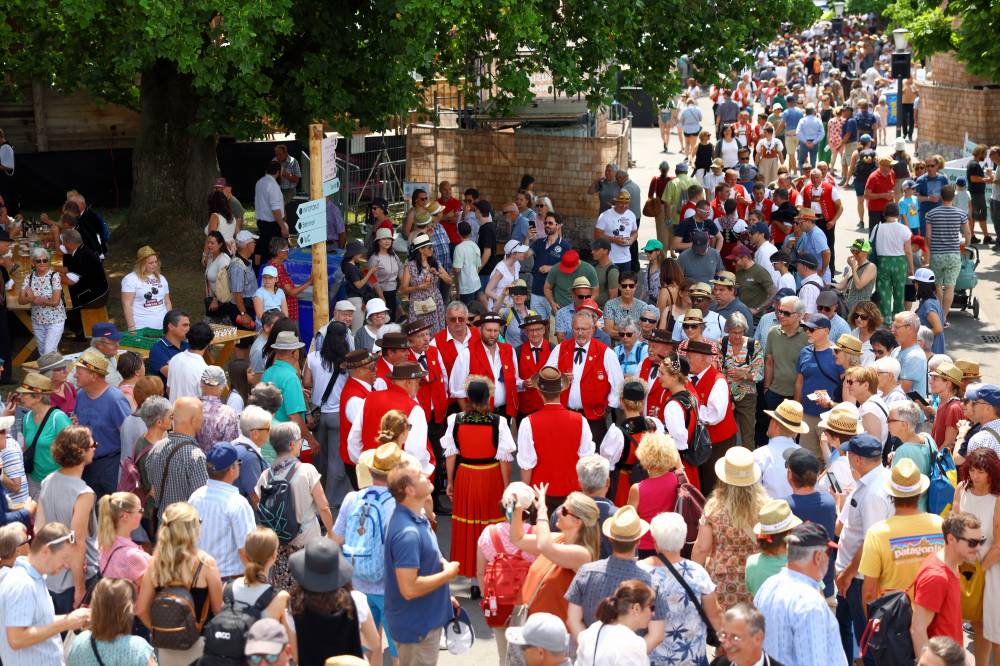
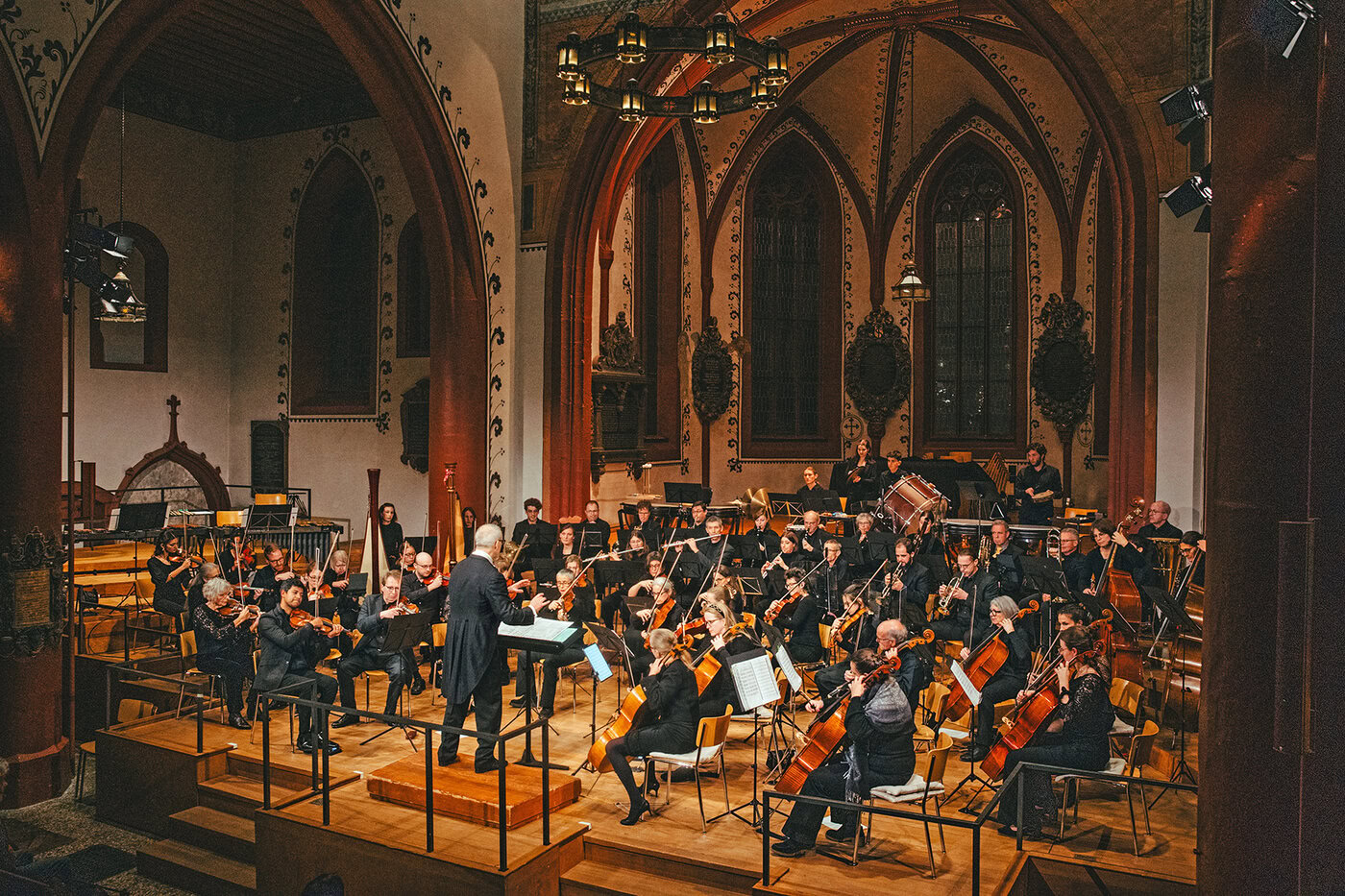
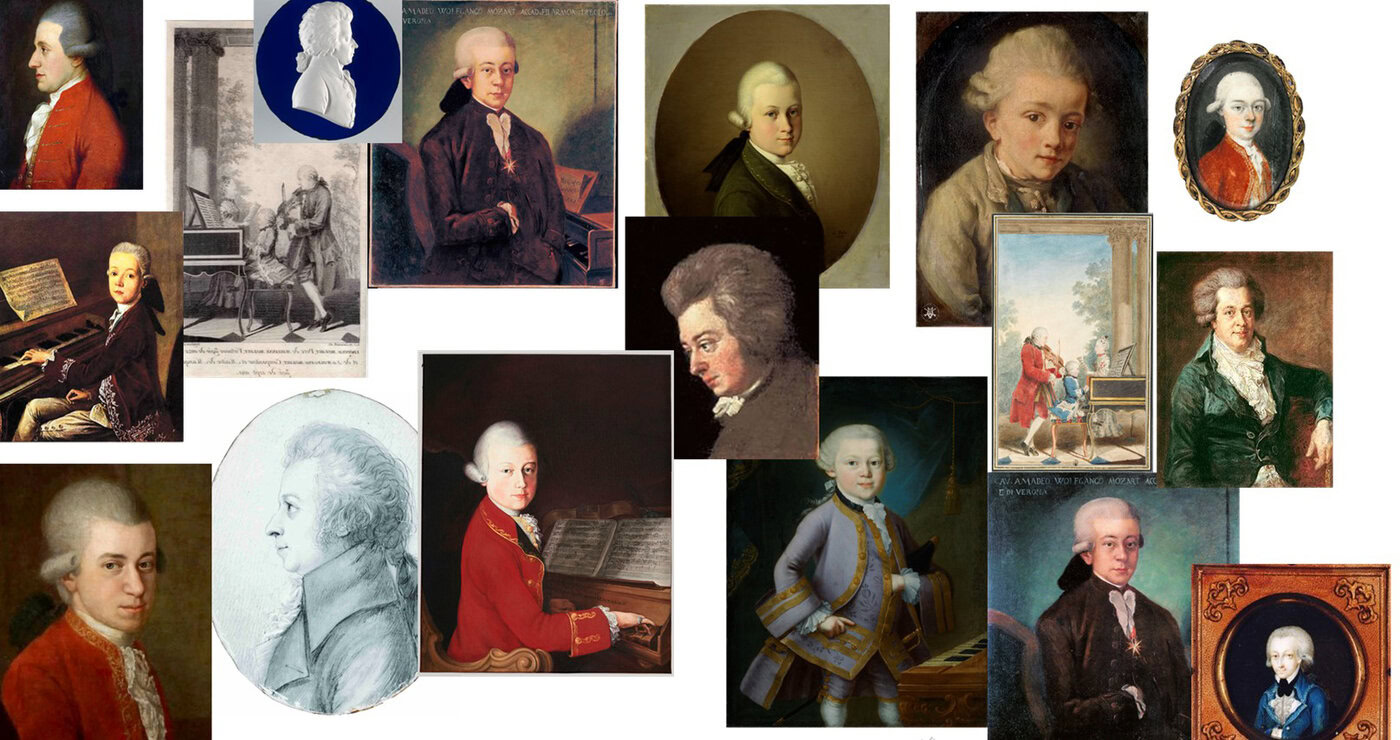
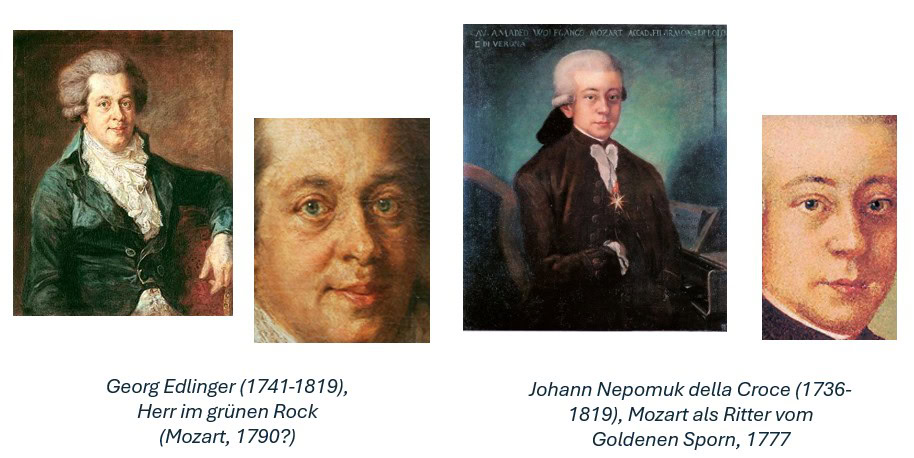
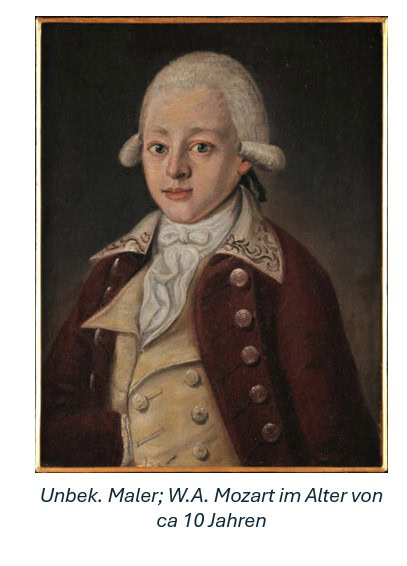 The picture detective was well aware that "new" Mozart portraits continue to appear to this day, but that they cannot be verified. He therefore proceeded with caution. He initially substantiated his thesis that the portrait he had found depicted the young Wolfgang Amadeus Mozart by comparing it with the portraits of Joseph Lange, Dorothea Stock and Joseph Grassi, which were considered authentic, and with the one by Pietro Antonio Lorenzoni from 1763, which shows the child Mozart at the age of six (collage, bottom row, 3rd from right). He primarily relied on the comparative observation of physiognomic features.
The picture detective was well aware that "new" Mozart portraits continue to appear to this day, but that they cannot be verified. He therefore proceeded with caution. He initially substantiated his thesis that the portrait he had found depicted the young Wolfgang Amadeus Mozart by comparing it with the portraits of Joseph Lange, Dorothea Stock and Joseph Grassi, which were considered authentic, and with the one by Pietro Antonio Lorenzoni from 1763, which shows the child Mozart at the age of six (collage, bottom row, 3rd from right). He primarily relied on the comparative observation of physiognomic features.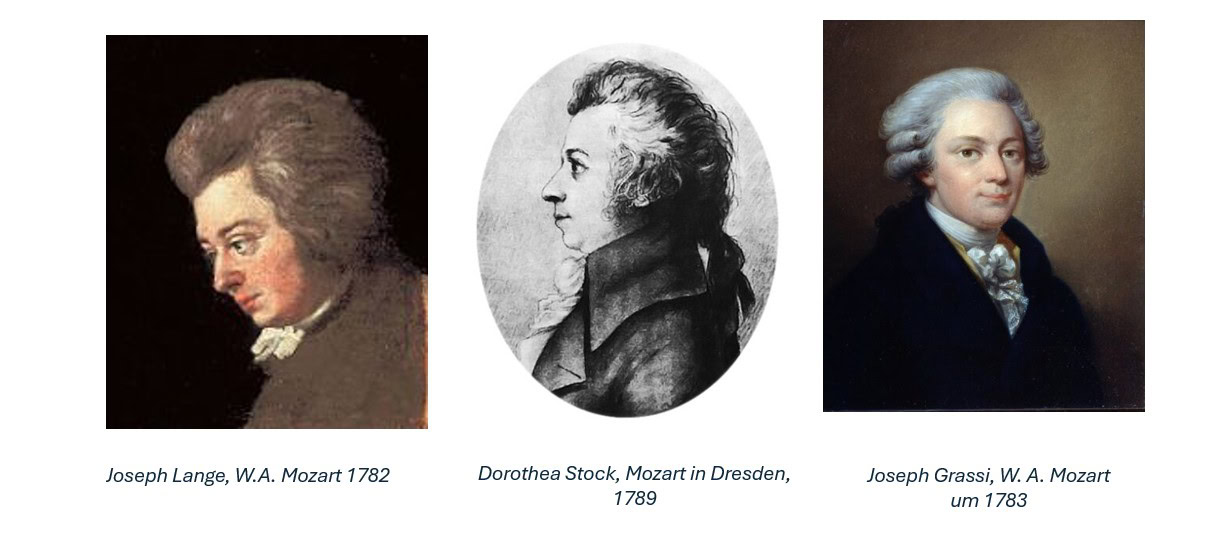
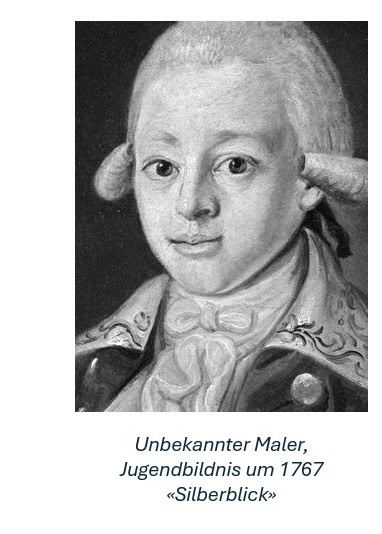 In order to verify the assumptions based purely on observation, the portrait was finally examined using biometric facial recognition in comparison with the four paintings mentioned above. The aim was to prove that the picture did not depict Mozart.
In order to verify the assumptions based purely on observation, the portrait was finally examined using biometric facial recognition in comparison with the four paintings mentioned above. The aim was to prove that the picture did not depict Mozart.